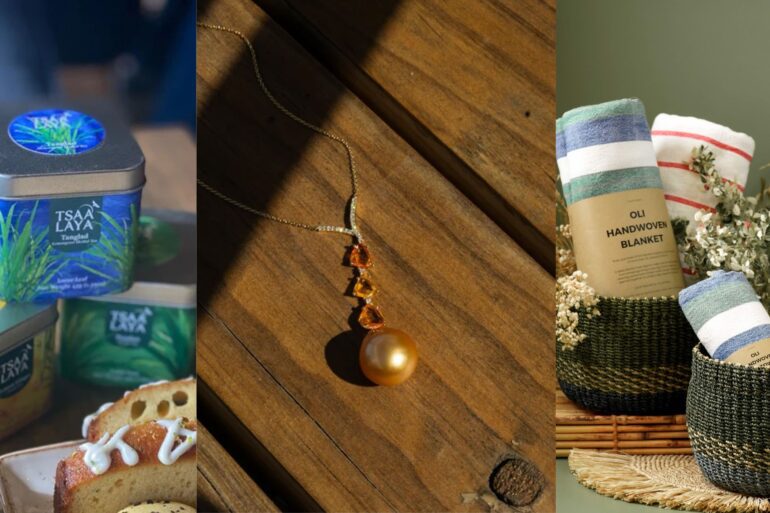Casa Juan expands its Filipino homeware line with a limited-edition collection of side tables, jewelry boxes, clocks, and serving trays by contemporary artist Dominic Rubio.
The collection proposes a new way of appreciating and integrating Rubio’s distinctive “people types” wearing turn-of-the-century Philippine traditional garb. Casa Juan founder Michelle Asence Fontelera explains, “The idea was to promote purposeful Filipino art. This is art that you can actually use. The collection also hones in on the idea of ‘art for all.’”
The pairing of Casa Juan and Rubio was bound by a shared desire to make art more accessible. It was also brought to life and set in motion by Galerie Joaquin. This would be Rubio’s first time to lend his artistry to merchandise.









He elaborates, “I’ve been offered to turn my pieces into merchandise many times. It’s very special to me to show the Filipino way of life in my art. I hope we don’t forget our cultural past.”
Michelle, who has been gradually integrating creative collaborations into Casa Juan’s product range, adds, “I have long admired and collected the works of Dominic Rubio. They strike me as a modern version of Tipos del Pais. More than that, I am an avid supporter of Philippine art. So I sought out ways to collaborate with more artists to bring a piece of the Philippines and Filipino artistry into more homes.”
Rubio was born in Paete, Laguna in 1970, a town known for its wood carving tradition, was an early indication that heritage and artistry would be an integral part of his life. He honed his techniques as a visual artist at the Santo Tomas College of Fine Arts where he majored in Commercial Arts.









It then seemed like a natural progression that he would pursue a career in the advertising world. Rubio worked as an artist for one of the country’s largest advertising agencies, Puris Lintis of Manila. Later, he relocated to the more tranquil shores of Pearl Farm in Davao del Sur. There, the artist connected with landscapes, people and way of life in Northern Mindanao. His explorations of the southern region also allowed him to live among the Mandaya and T’boli tribes as well as the Bilaans and Badjaos.
Rubio’s early works were first exhibited at the Ad Infinitum. His works depicted the quintessential Filipina in her most natural forms and surroundings. In 2023, he held his first major show with Galerie Joaquin where he once again showcased the Filipina and her evolving sensibilities.












The artist has since been regarded as one of the most important contemporary artists of his time. Collectors of his works and art critics have been enamored by his distinctive “peoples types.” These are signature figures of men and women with elongated necks, caricature-esque heads wearing Philippine traditional national dress. His portrayal of Filipinos and Philippine life is a visual celebration of a proud race shaped by its complex past and defined by its promising future.
Featured in this special collection of objets d’arts are prints from Rubio’s Paseo en Moto (currently on exhibit at Galerie Joaquin in Madrid) and Sol Dorado. The artist shares, “ “I want to show the Manila of yesteryear when it looked like Europe. Napakaganda. Ang sarap ipinta.”
With pieces from this special partnership, Casa Juan and Rubio impart the value in celebrating our culture, identity as a people, and our distinct way of life.





